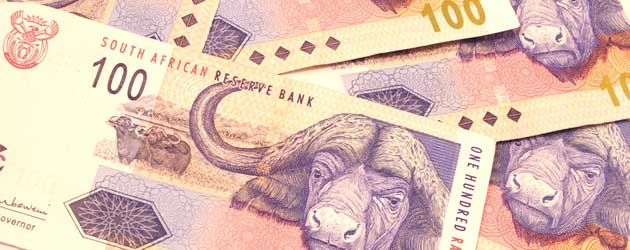On Thursday the Pound to South African Rand (GBP/ZAR) strengthened as investor attention focused on upcoming credit rating announcements due to be delivered by Fitch and Standard & Poor’s. With the South African economy continuing to struggle and suffering from falling commodity prices economists are fearing that the nations credit ratings will be cut.
The Pound to South African Rand (GBP/ZAR) exchange rate strengthened on Wednesday after a report showed that inflation in South Africa was at its lowest level in ten months.
On Tuesday the Pound to South African Rand (GBP/ZAR) exchange rate continued to decline after South African Manufacturing production rose 2.2% year on year in October after increasing by a revised 8.6% (8%) year on year in September.
Manufacturing output rose 0.5% between September and October.
Earlier in the session progressed the Pound Sterling to South African Rand (GBP/ZAR) exchange rate continued to soften due to the release of the weak production data out of the UK. Manufacturing production data out of South Africa matched forecasts on a yearly basis but was softer on a month on month basis.
The Pound Sterling to South African Rand (GBP/ZAR) exchange rate continued to trade close to a 2-month high but gave up some ground as disappointing manufacturing and industrial production out of the UK was offset by poor mining production data out of South Africa.
Pound Sterling to South African Rand Exchange Rate Falls on UK Data
Sterling fell against many of its most traded peers including the Euro and US Dollar after a report showed that UK industrial output fell by -0.1% on a monthly basis in October and manufacturing production decline by -0.7%.
Economists had been forecasting that industrial production would increase by 0.2% in October. They also forecast a 0.2% rise in the manufacturing sector. The drops leave industrial production up just 1.1% year-on-year, and manufacturing up only 1.7%.
The weaker than expected data renewed fears that the UK economy is heading for a sharp slowdown over the coming months as the weakness of the Eurozone and slowing global economy impacts on production. As the report is one of the first to offer an indication of how the UK economy is performing in the fourth quarter of the year, it does not paint a pretty picture.
Earlier in the session, the Pound had been supported by a positive retail sales report published by the British Retail Consortium. The report showed that retail sales increased by 0.9% on a like for like basis from November 2013. That data was quickly ignored as the poor production reports were released.
The Rand managed to claw back some lost ground but remained near a two-month low as domestic South African data weighed heavily on the currency. The previous session’s poor current account data sent the Rand tumbling. Adding to that data was the publication of the latest mining production data, which came in below expectations.
On a yearly basis, mining production tumbled by -1.1% on a yearly basis and increased by 0.5%, below economist expectations for a monthly rise of 0.4%.
Pound Sterling to South African Rand Exchange Rate
The GBP/ZAR exchange rate hit a session high of 18.012
The GBP/ZAR exchange rate hit a session low of 17.871

